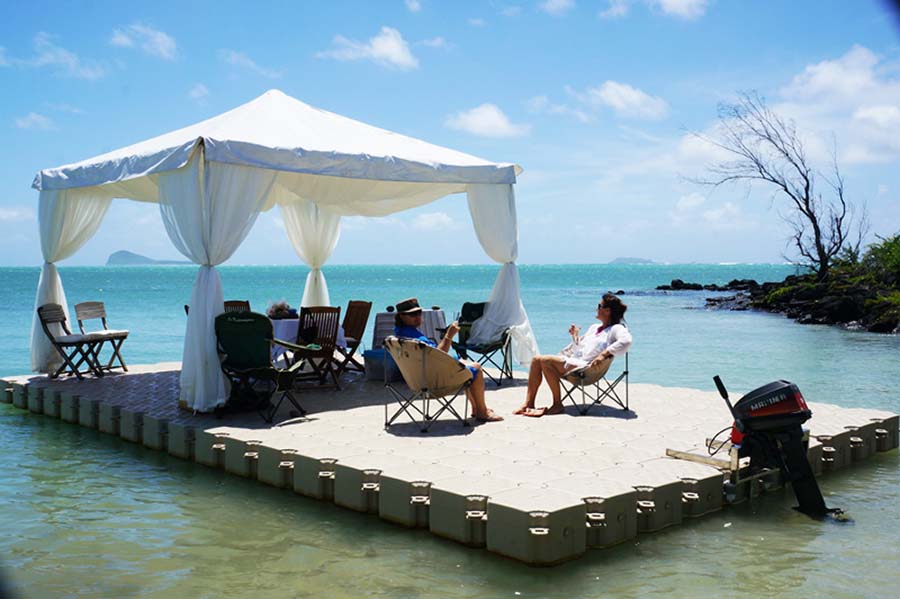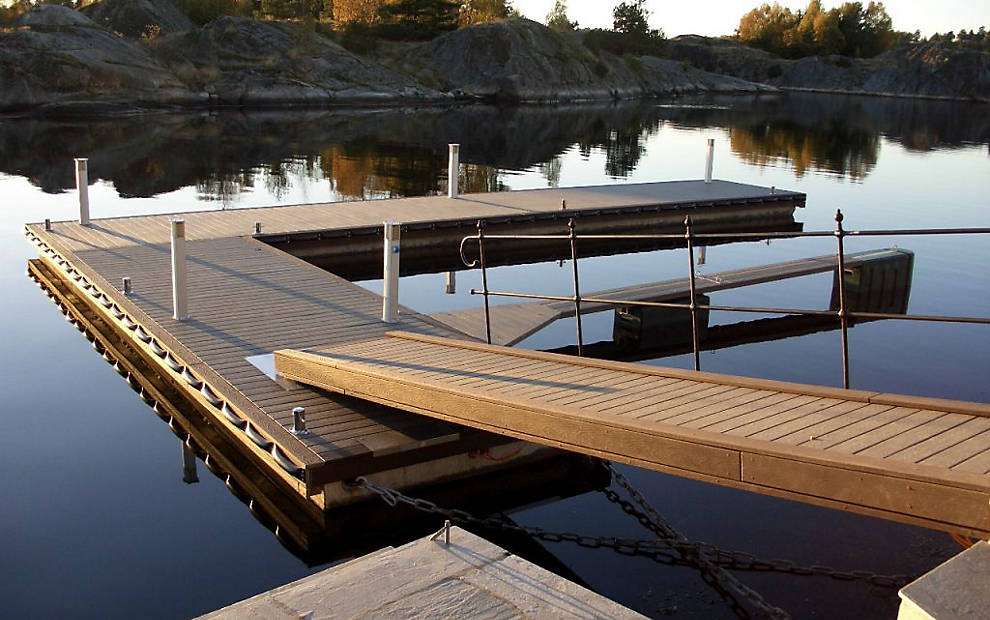Ingenious Floating Docks: The Future of Waterfront Gain Access To and Recreation
Ingenious Floating Docks: The Future of Waterfront Gain Access To and Recreation
Blog Article
Develop the Perfect Docking Solution With Floating Docks
Floating docks existing a functional solution for a variety of maritime demands, adapting perfectly to rising and fall water degrees and diverse vessel kinds. As we explore the vital aspects that add to the effectiveness of floating docks, numerous crucial variables concerning security and upkeep will emerge, elevating questions about exactly how to enhance your docking experience.

Advantages of Floating Docks
Floating docks deal many advantages that make them a perfect option for different maritime applications. Among the primary advantages is their flexibility to changing water levels. Unlike repaired docks, floating docks fluctuate with the tide, ensuring constant accessibility for vessels. This function is particularly vital in areas prone to significant tidal variations or seasonal water degree changes.
Furthermore, floating docks are typically easier and quicker to mount contrasted to conventional set frameworks. Their modular style enables simple setting up and disassembly, helping with maintenance and moving when required. This versatility is especially valuable for short-term applications or in settings where conditions might transform.
Floating docks also tend to be a lot more eco-friendly, as they minimize interruption to the seabed and surrounding water ecological communities. Their buoyant nature decreases the risk of damage to aquatic life, promoting a healthier atmosphere. Additionally, these docks can be tailored to fit numerous vessel sizes, making certain that they fulfill specific operational needs - floating dock builder.
Ultimately, the combination of flexibility, convenience of installation, and environmental considerations makes floating docks a highly efficient option for a variety of maritime needs.
Choosing the Right Products
Choosing the ideal materials for floating docks is crucial to ensure security, durability, and resilience. The choice of materials straight affects the dock's performance in numerous ecological problems, including exposure to water, sunshine, and potential wear from marine web traffic.
Typical materials made use of for floating docks include aluminum, wood, and high-density polyethylene (HDPE) Aluminum is lightweight, corrosion-resistant, and requires marginal maintenance, making it an outstanding option for longevity. Its first cost can be greater compared to various other materials.
Timber, while visually enticing and offering a conventional look, can be vulnerable to rot and insect damages otherwise appropriately treated. As a result, making use of pressure-treated wood or naturally durable types like cedar or redwood can minimize these problems.
HDPE is a preferred option because of its resistance to UV rays and chemicals, in addition to being eco-friendly. floating dock company. It is light-weight and offered in numerous shades, enabling modification
Ultimately, the ideal material selection will rely on details demands, consisting of budget plan, desired aesthetic appeals, and ecological considerations. Cautious evaluation of these aspects will result in a successful and durable floating dock service.
Layout Considerations for Stability
When designing floating docks, making certain security is a fundamental facet that can considerably influence their capability and security. Stability in floating dock layout is affected by different factors, including buoyancy, weight distribution, and the arrangement of elements.
Weight distribution is important; equally dispersing lots across the dock stops tilting and enhances security. Bigger designs can use raised security, specifically in harsh water conditions, while longer docks may call for additional supports to prevent drooping.
One more vital consideration is the ecological effect, including wave action and wind. Incorporating attributes such as sidewalls or skirting can help mitigate the effects of environmental forces, preserving stability in damaging conditions. Ultimately, a combination of thoughtful design, product option, and understanding of ecological variables will yield a floating dock that fulfills both stability and safety and security demands.
Installment Tips and Techniques

Next, secure the needed authorizations and comply with regional regulations, which may determine setup approaches and environmental factors to consider. If needed, engage a certified contractor experienced in floating dock installments. Usage top quality materials created for marine atmospheres to boost toughness and long life.
When placing the dock, align it alongside the shoreline to facilitate simple gain access to. Ensure that the anchoring system is durable, employing cinder block or helical anchors to support the dock versus wind and wave action. It's essential to make up seasonal water level variations, including prospective ice movement in chillier environments.
During the installment, verify the dock's floatation and stability prior to wrapping up the anchoring. Routinely evaluate the installment for any indications of wear or damages. By following these techniques and ideas, you can achieve a protected, useful, and aesthetically pleasing floating dock setup news that meets your needs.
Upkeep and Care Guidelines
Caring and keeping for floating docks is crucial to lengthening their life-span and making sure risk-free usage. Routine evaluations should be conducted imp source to determine any signs of wear, damage, or marine growth. Seek fractures, loosened fittings, or discolored locations on the dock's surface area, as these issues can jeopardize architectural integrity.
Cleansing is important. Make use of a pressure washer to get rid of algae, barnacles, and debris, which can gather in time. For stubborn growth, consider environmentally friendly cleaning representatives that will not harm water life.
In addition, examine the mooring lines and anchors frequently to ensure they are secure and complimentary from rust. Change any type of torn or harmed lines promptly to preserve stability.
Throughout extreme climate, such as tornados or freezing problems, take precautionary procedures. Protect the dock with added mooring lines and, if viable, remove any detachable elements to avoid damages.
Final Thought
In conclusion, the implementation of floating docks provides a efficient and flexible docking remedy ideal for various maritime applications. With proper installation and normal upkeep, floating docks can give dependable and efficient docking experiences for a large array of vessels.
As we check out the vital elements that contribute to the performance of floating docks, several key aspects concerning security and maintenance will certainly arise, increasing inquiries concerning how to maximize your docking experience. Unlike repaired docks, floating docks increase and loss with the tide, ensuring regular accessibility for vessels.When designing floating docks, guaranteeing security is a fundamental aspect that can considerably impact their capability and safety and security. Security in floating dock design you can try this out is affected by various variables, including buoyancy, weight distribution, and the arrangement of elements. Inevitably, a mix of thoughtful style, material selection, and understanding of environmental factors will certainly produce a drifting dock that meets both security and safety and security requirements.
Report this page